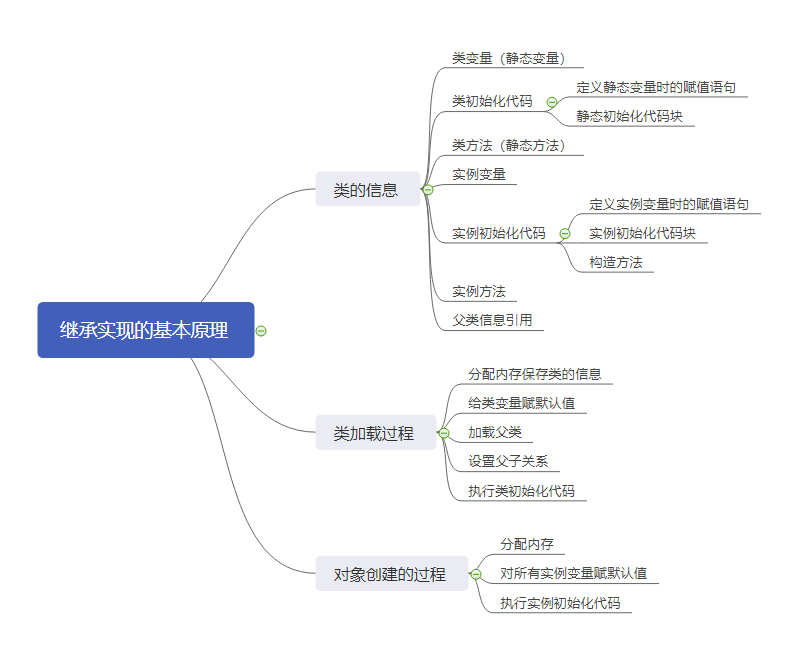
方法调用的过程
寻找要执行的实例方法的时候,是从对象的实际类型信息开始查找的,找不到的时候,再查找父类类型信息。
动态绑定,而动态绑定实现的机制就是根据对象的实际类型查找要执行的方法,子类型中找不到的时候再查找父类。
变量访问的过程
对变量的访问是静态绑定的,无论是类变量还是实例变量。代码中演示的是类变量:b.s和c.s,通过对象访问类变量,系统会转换为直接访问类变量Base.s和Child.s。
示例代码:
package com.xc.xcspringboot.chapter4.chapter4_3_1; /** * Created by xc on 2019/10/6 * 代码清单4-7 演示继承原理:Base类 */ public class Base { /** * 静态变量s */ public static int s; /** * 实例变量a */ private int a; // 静态初始化代码块 static { System.out.println("基类静态代码块, s: " + s); s = 1; } // 实例初始化代码块 { System.out.println("基类实例代码块, a: " + a); a = 1; } /** * 构造方法 */ public Base() { System.out.println("基类构造方法, a: " + a); a = 2; } /** * 方法step */ protected void step() { System.out.println("base s: " + s + ", a: " + a); } /** * 方法action */ public void action() { System.out.println("start"); step(); System.out.println("end"); } }
package com.xc.xcspringboot.chapter4.chapter4_3_1; /** * Created by xc on 2019/10/6 * 代码清单4-8 演示继承原理:Child类 */ public class Child extends Base { /** * 和基类同名的静态变量s */ public static int s; /** * 和基类同名的实例变量a */ private int a; static { System.out.println("子类静态代码块, s: " + s); s = 10; } { System.out.println("子类实例代码块, a: " + a); a = 10; } public Child() { System.out.println("子类构造方法, a: " + a); a = 20; } protected void step() { System.out.println("child s: " + s + ", a: " + a); } }
package com.xc.xcspringboot.chapter4.chapter4_3_1; /** * Created by xc on 2019/10/6 */ public class Chapter4_3_1 { public static void main(String[] args) { System.out.println("---- new Child()"); Child c = new Child(); System.out.println("\n---- c.action()"); c.action(); Base b = c; System.out.println("\n---- b.action()"); b.action(); System.out.println("\n---- b.s: " + b.s); System.out.println("\n---- c.s: " + c.s); } }
---- new Child() 基类静态代码块, s: 0 子类静态代码块, s: 0 基类实例代码块, a: 0 基类构造方法, a: 1 子类实例代码块, a: 0 子类构造方法, a: 10 ---- c.action() start child s: 10, a: 20 end ---- b.action() start child s: 10, a: 20 end ---- b.s: 1 ---- c.s: 10